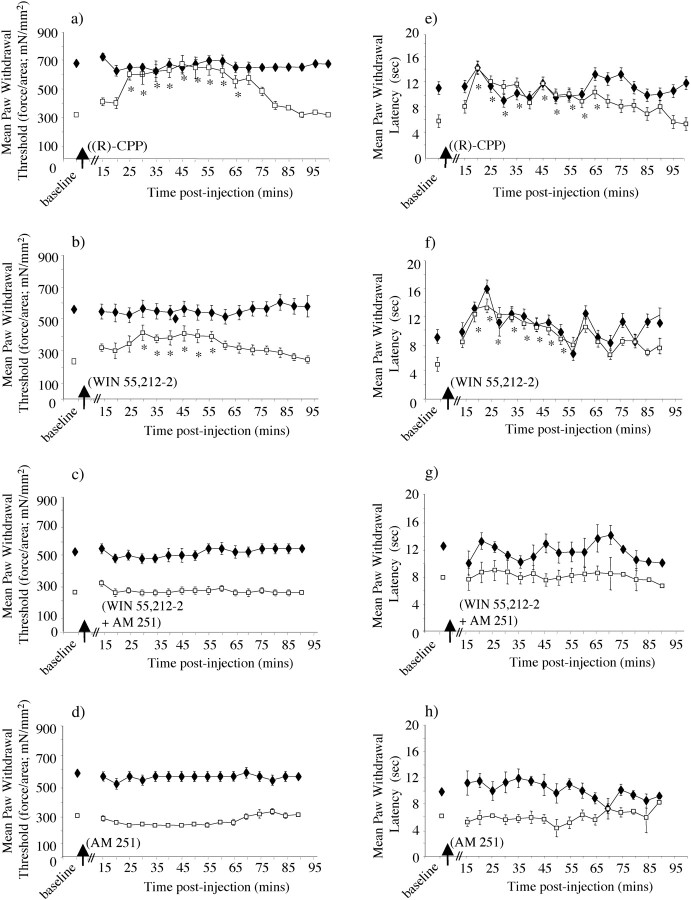Fig. 6.
Effects of intrathecal administration of NMDA and cannabinoid receptor-targeting agents on sensitized behavioral reflex responses after lysolecithin treatment. Paw withdrawal thresholds in response to cutaneous mechanical stimulation with von Frey filaments (a–d) and paw withdrawal latencies in response to cutaneous noxious thermal stimulation (e–h) were measured in animals at peak behavioral reflex sensitivity after topical application of lysolecithin to one saphenous nerve. Ipsilateral (■) and contralateral (♦) values are displayed before and after intrathecal administration of each pharmacological agent as paw withdrawal threshold in milliNewtons per millimeter squared (mN/mm2) for mechanical stimulation or paw withdrawal latency (seconds) for thermal stimulation. For all measurements, each value is the mean ± SEM, and statistical significance (*p < 0.05) of any differences between postinjection threshold values and preinjection baseline values was determined by a one-way repeated measures ANOVA with Dunnet's post hoc analysis. a,e, The NMDA receptor antagonist (R)-CPP (100 pmol) reversed the behavioral reflex sensitivity to mechanical stimulation (a) and thermal stimulation (e) in lysolecithin-treated animals for up to 65–70 min after intrathecal application (n = 8). b, f, The mixed CB1/CB2 cannabinoid receptor agonist WIN 55,212–2 (60 pmol) significantly reversed the behavioral reflex sensitivity to mechanical stimulation (b) and thermal stimulation (f) in lysolecithin-treated animals (n = 7) for up to 55–60 min after intrathecal application. c,g, When injected in combination, WIN 55,212–2 and AM 251 produced no significant effect on the behavioral reflex sensitivity to mechanical stimulation (c) and thermal stimulation (g) in lysolecithin-treated animals (n = 8). d, h, The CB1 receptor antagonist AM 251 (100 pmol) resulted in no change in the behavioral reflex sensitivity to mechanical stimulation (d) and thermal stimulation (h) in lysolecithin-treated animals (n = 7).

